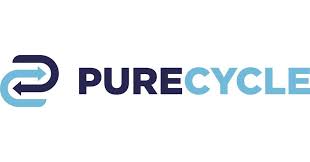Reduction Technologies
Introduction:
Radon gas is a radioactive gas that can pose a significant health risk if it accumulates in high levels inside your home. Radon gas can be found in the soil and can seep into your home through cracks in the foundation, walls, and floors. Inhaling high levels of radon can cause lung cancer, making it crucial to implement effective radon reduction technologies to minimize exposure. In this blog post, we will discuss how to utilize radon reduction technologies for maximum benefit.
Radon gas is a colorless, odorless, and tasteless radioactive gas that can accumulate in homes and pose a significant health risk. Radon is the second leading cause of lung cancer in the United States, with an estimated 21,000 deaths annually. It is produced naturally from the decay of uranium in soil, rocks, and water. When radon gas enters your home, it can become trapped and accumulate to dangerous levels, especially in confined spaces like basements and crawl spaces. The good news is that there are effective radon reduction technologies available to minimize exposure and reduce health risks. In this blog post, we will explore the essential points to consider when utilizing radon reduction technologies for maximum benefit.
Important Points:
- Understand the source of radon: Radon is produced from the natural decay of uranium, which is commonly found in soil and rocks. Before implementing radon reduction technologies, it is essential to understand the source of radon in your home.
- Conduct a radon test: Conducting a radon test is the first step in identifying if you have a radon problem. You can purchase radon test kits from your local hardware store or hire a professional to conduct the test for you.
- Select the right radon reduction technology: Several radon reduction technologies are available, including active soil depressurization, passive ventilation, and sealing foundation cracks. It is important to select the technology that best suits your home’s needs and your budget.
- Hire a certified professional: If you decide to hire a professional to install your radon reduction technology, ensure they are certified and licensed to perform the work.
- Maintain your radon reduction system: Regular maintenance of your radon reduction system will ensure it continues to function effectively. Follow the manufacturer’s instructions for maintenance, or hire a professional to conduct the maintenance for you.
FAQ’s:
1.What is the acceptable level of radon in my home?
A: The Environmental Protection Agency (EPA) recommends a radon level of 4 picocuries per liter (pCi/L) or less. If your home has a radon level above this level, it is recommended to take action to reduce the level.
2.What are the health risks associated with exposure to radon gas?
A: Exposure to high levels of radon gas can increase your risk of developing lung cancer.
3.Can radon reduction technologies completely eliminate radon gas?
A: Radon reduction technologies can significantly reduce radon gas levels, but it is challenging to completely eliminate it.
Pros:
- Radon reduction technologies can significantly reduce the risk of developing lung cancer associated with radon gas exposure.
- Radon reduction technologies are affordable and can be easily installed in most homes.
- Most radon reduction technologies are low-maintenance and require minimal upkeep.
- Radon reduction technologies can also improve indoor air quality by reducing moisture and improving ventilation.
Cons:
- Radon reduction technologies may not completely eliminate radon gas in your home.
- Some radon reduction technologies, such as active soil depressurization, may increase your home’s energy consumption.
- Installing radon reduction technologies may require drilling or cutting into your home’s foundation, which can be costly and time-consuming.
- If installed incorrectly, radon reduction technologies may be ineffective or cause further health risks.
Final Conclusion:
Radon gas is a serious health concern, but there are effective radon reduction technologies available to reduce the risk of exposure. Conducting a radon test and selecting the right radon reduction technology can significantly reduce radon gas levels in your home. Hiring a certified professional to install and maintain your radon reduction technology is also crucial to ensure its effectiveness. Although radon reduction technologies may not completely eliminate radon gas, they can significantly reduce the risk of developing lung cancer associated with radon gas exposure.
Radon gas is a serious health concern that can be minimized with the right radon reduction technology. Conducting a radon test, selecting the right technology, hiring a certified professional, and regular maintenance are all crucial steps in utilizing radon reduction technologies for maximum benefit. While it may not be possible to completely eliminate radon gas, reducing exposure levels can significantly reduce the risk of developing lung cancer. It is essential to prioritize the health and safety of you and your family by implementing radon reduction technologies and taking steps to maintain a healthy indoor environment. Don’t wait until it’s too late – take action today to protect yourself and your loved ones from the harmful effects of radon gas.







